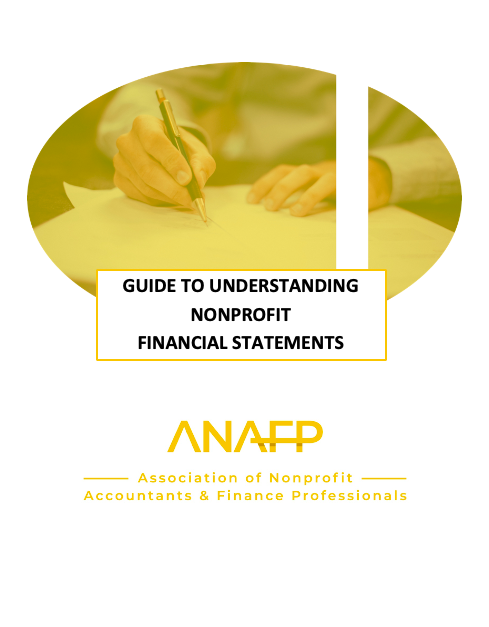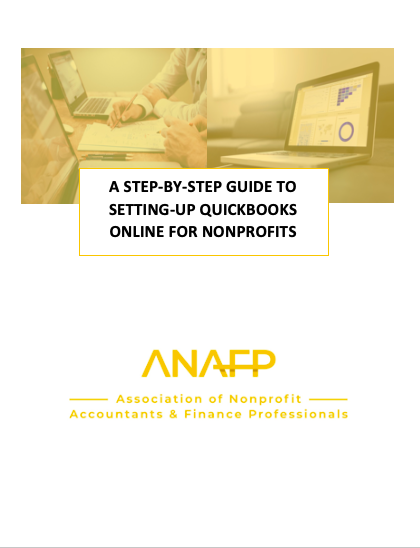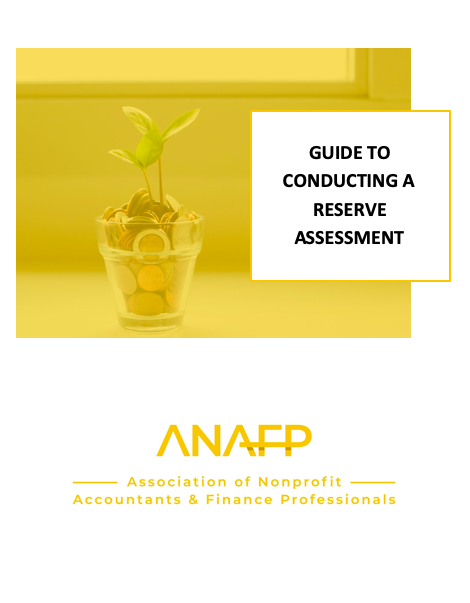- Home
- Professional Resources
- Budgeting & Strategic Planning
Budgeting & Strategic Planning Resources
Every nonprofit deserves well-educated accounting and finance staff.
Sign-up for ANAFP Publications and Emails.
Annual Timeline for Managing a Nonprofit's Budgets (member only)
Given the complexity in nonprofit budgeting, nonprofits must continuously stay on top of their operating and program budgets. Learn ANAFP’s suggested timeline for an ideal budget development and ongoing budget review process. The timeline sets forth the tasks that should be completed each month to keep the organization’s budgeting process on track. |
|
What To Do When You Overspend A Grant Budget
Overspending a grant budget can have significant financial implications for a nonprofit. Careful consideration needs to be made each time a nonprofit enters into a grant. Learn more about the various scenarios in which a nonprofit may be unable to use grant funds on costs that the organization thought were acceptable and what the organization should do. |
| Best Practices in Nonprofit Budgeting It’s important in the nonprofit world for organizations to develop and follow financial budgets. Because nonprofits typically operate with limited funds, have restrictions on how funds can be spent, and must publicly report their expenses, budgets play an important role in every nonprofit. Learn the best practices that nonprofits should consider before starting the budget process. |
| Nonprofit Budgeting Concepts and Processes (member only) Nonprofits operate with a limited amount of cash. And, similar to for-profits which have various product and service lines, nonprofits should budget and track revenues and expenses for multiple program service areas. However, before a nonprofit begins the budgeting process, there are key concepts and terms that all members of the organization should understand. |
| Budget Forecasting for Nonprofits (member only) Often times it becomes evident that actual revenues and expenses may not coincide with an organization's originally projected targets. When this occurs, it is often necessary to realign the budget through forecasting. Budget forecasting allows nonprofits the flexibility to adjust expectations in an ever-evolving business landscape. |
How to Calculate Indirect Rates (member only) Many nonprofits develop indirect rates as a mechanism for allocating joint costs among multiple projects and donors. Learn more about what constitutes indirect costs and how to calculate indirect rates. And discover strategies on how to ensure you recover your indirect costs when faced with indirect caps on grants and contracts. |
32 Financial Ratios for Every Nonprofit Financial ratios help nonprofits measure the financial health of the organization. A nonprofit that tracks important financial ratios are not only in a better position to evaluate an organization’s operations, programs, and financial stability, the results may also be used to benchmark the organization against management objectives, past performance, and similar organizations and competitors. |
| Managing Foreign Exchange Risk for Nonprofits (member only) More and more nonprofits are operating and/or expanding internationally. Although this expansion is a welcome sign that the organization is growing and expanding services, it also creates a new set of problems -- how to mitigate foreign exchange exposure and prevent unnecessarily losses due to fluctuating foreign currency rates. |
| How to Account for Uncertain Tax Positions (member only) Nonprofits are required to account for uncertain, material tax positions in the accounting system and include such information in their financial statements. Determining if a nonprofit has any such positions requires a careful inventory of all tax positions and then deciding if any of these are uncertain. This article will provide an overview for conducting this analysis and explore common areas of uncertain tax positions. |
Guide to Conducting a Reserve Assessment (member only) Many nonprofit organizations have or are interested in establishing a reserve fund to sustain the long-term future of the organization and/or provide the organization a source of capital for future development. Learn the six essential steps that every nonprofit should take to determine the ideal reserve fund amount. |
| Managing Cash Flow at a Nonprofit (member only) Cash flow management is critical for the success and sustainability of any nonprofit. Explore strategies to effectively manage a nonprofit's cash flow -- ensuring the organization can meet its obligations, invest in its mission, and achieve long-term financial sustainability. |
| What Constitutes Fundraising Costs Nonprofits are required to track and report expenses by three functional areas: program services, general and administrative, and fundraising. But what constitutes fundraising costs and how do these costs differ from development costs? Learn more about the definition of fundraising to help ensure your organization is accurately reporting, and not over-reporting, these expenses. |
How to Account for Membership Dues Member benefits specified in membership agreements embody goods and/or services that a nonprofit has promised to transfer to members. These promises are deemed “performance obligations”, and the transaction price for each good/service must be accounted for when recording membership dues. |
How to Calculate the IRS Public Support Test Nonprofits in the United States who function as public charities must pass the IRS public support test in order to remain classified as a public charity. Failing the test will have serious consequences as it will cause the public charity to be reclassified as a public foundation. Learn how to calculate your nonprofit's public support in order to properly file your annual tax return. |
Key Differences Between a Public Charity and Public Foundation Nonprofits in the United States organized under U.S. IRS Code Section 501(c)3 may be classified as either a public charity or a private foundation. Learn the key differences between these two entities to ensure your organization is classified correctly. |
Setting Executive Compensation and Benefits It is the responsibility of the Board of Directors to set the compensation and benefits package of the CEO/Executive Director. What guidance does the IRS provide nonprofits when setting this compensation and benefits package? What documentation is essential to obtain and review to ensure the compensation is reasonable and not excessive? |
Downloadable ANAFP Guides



